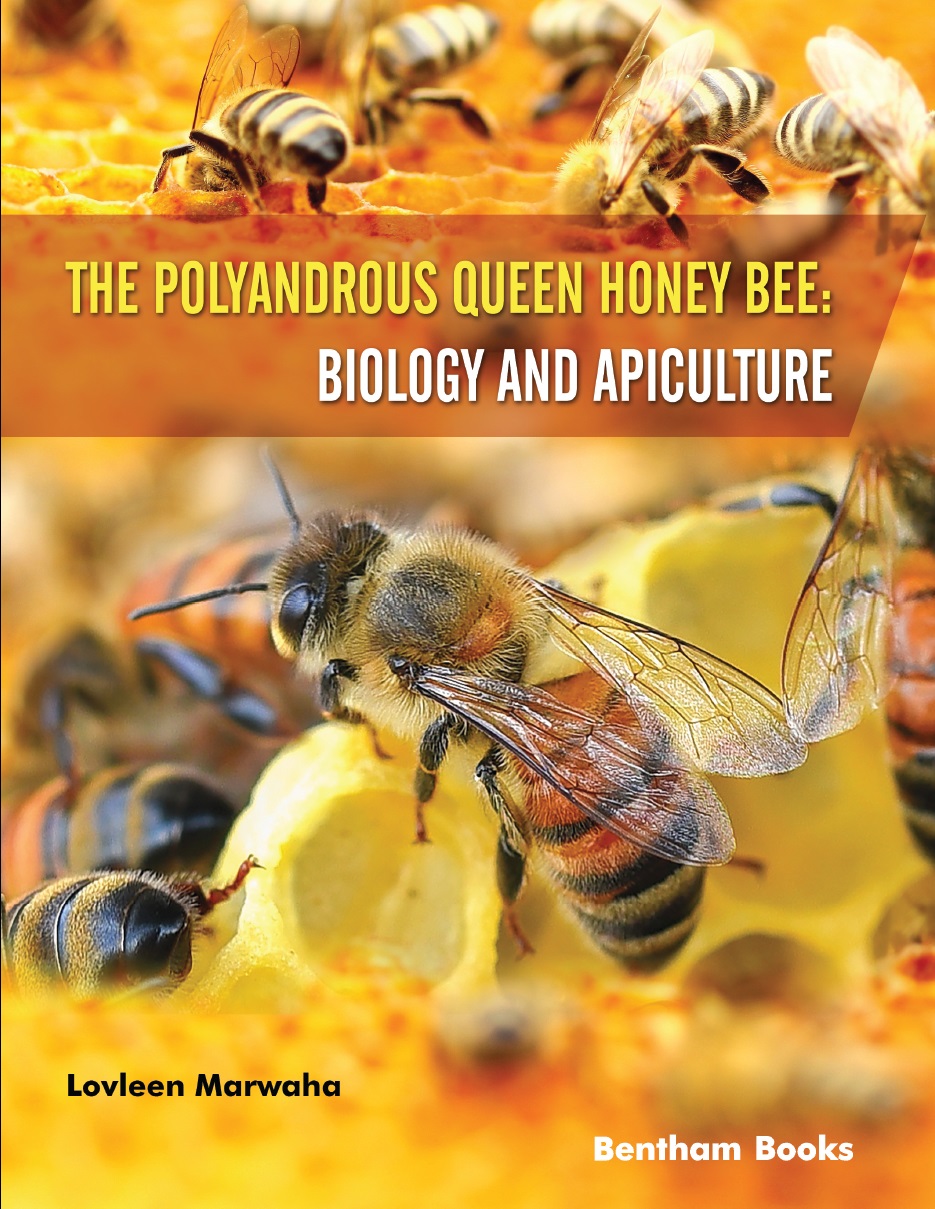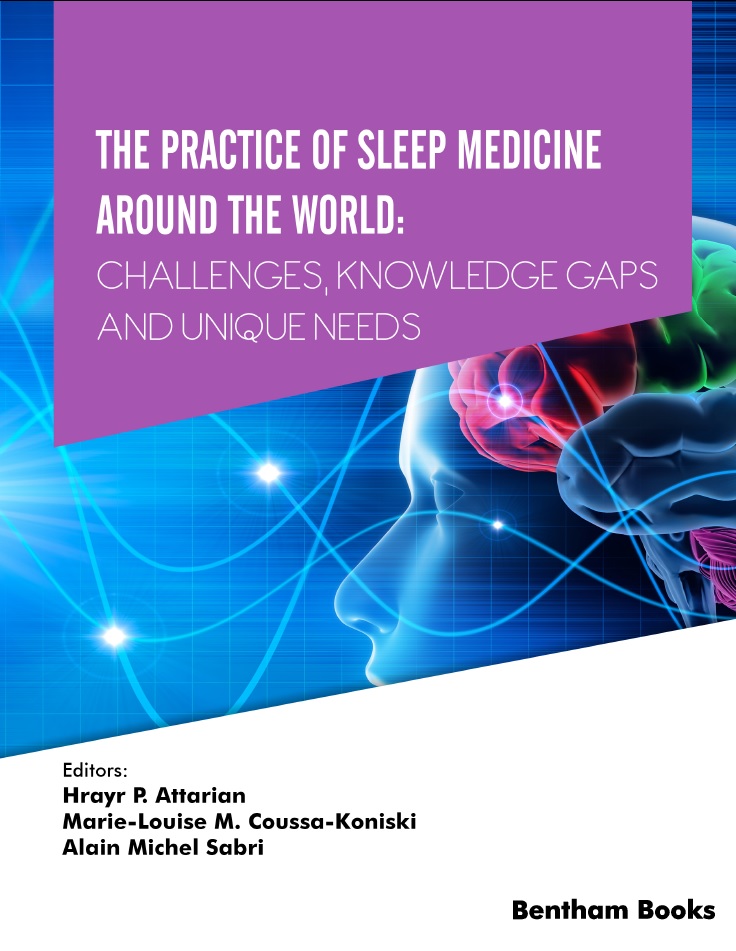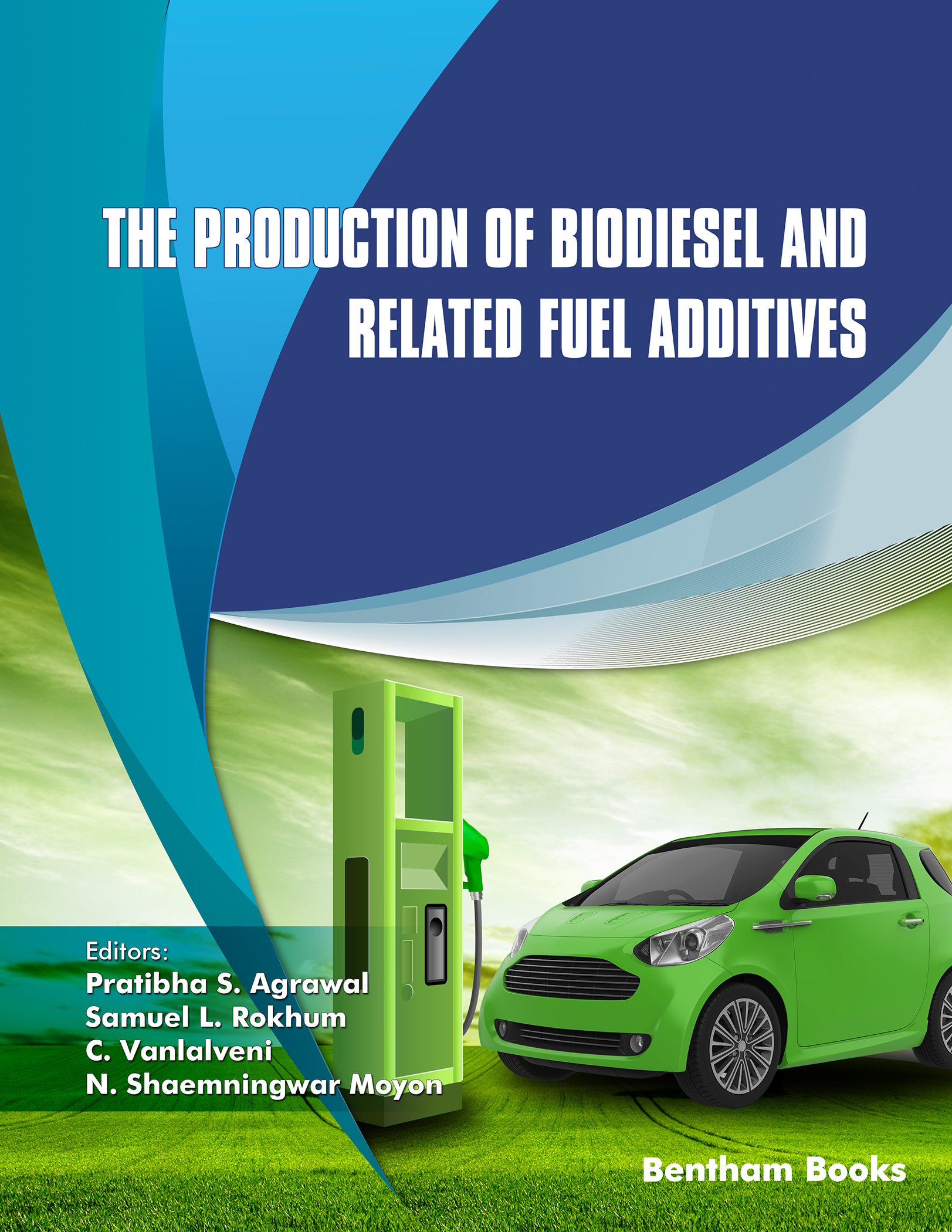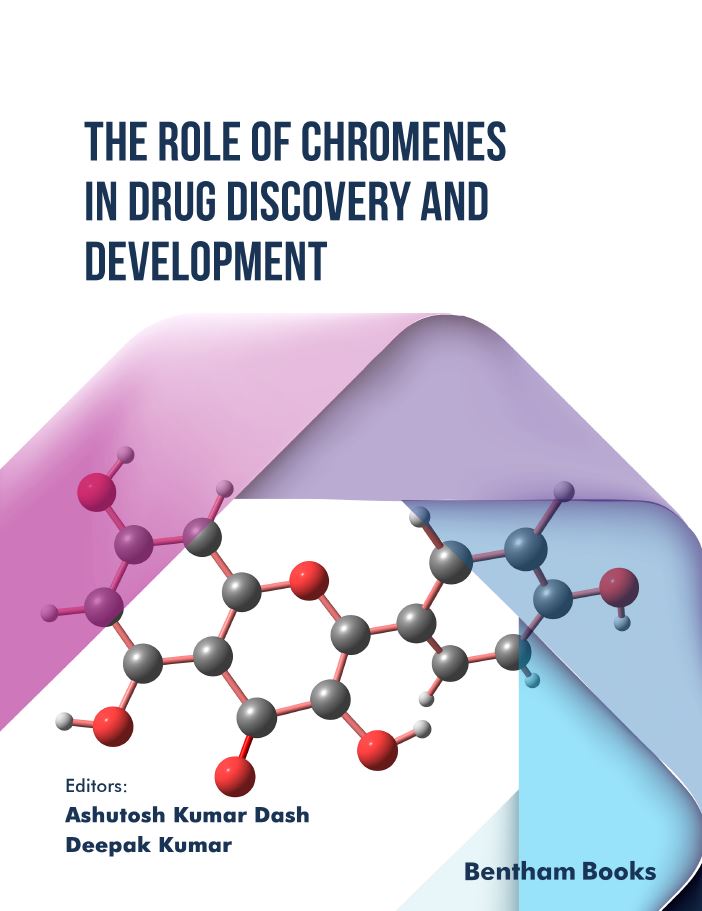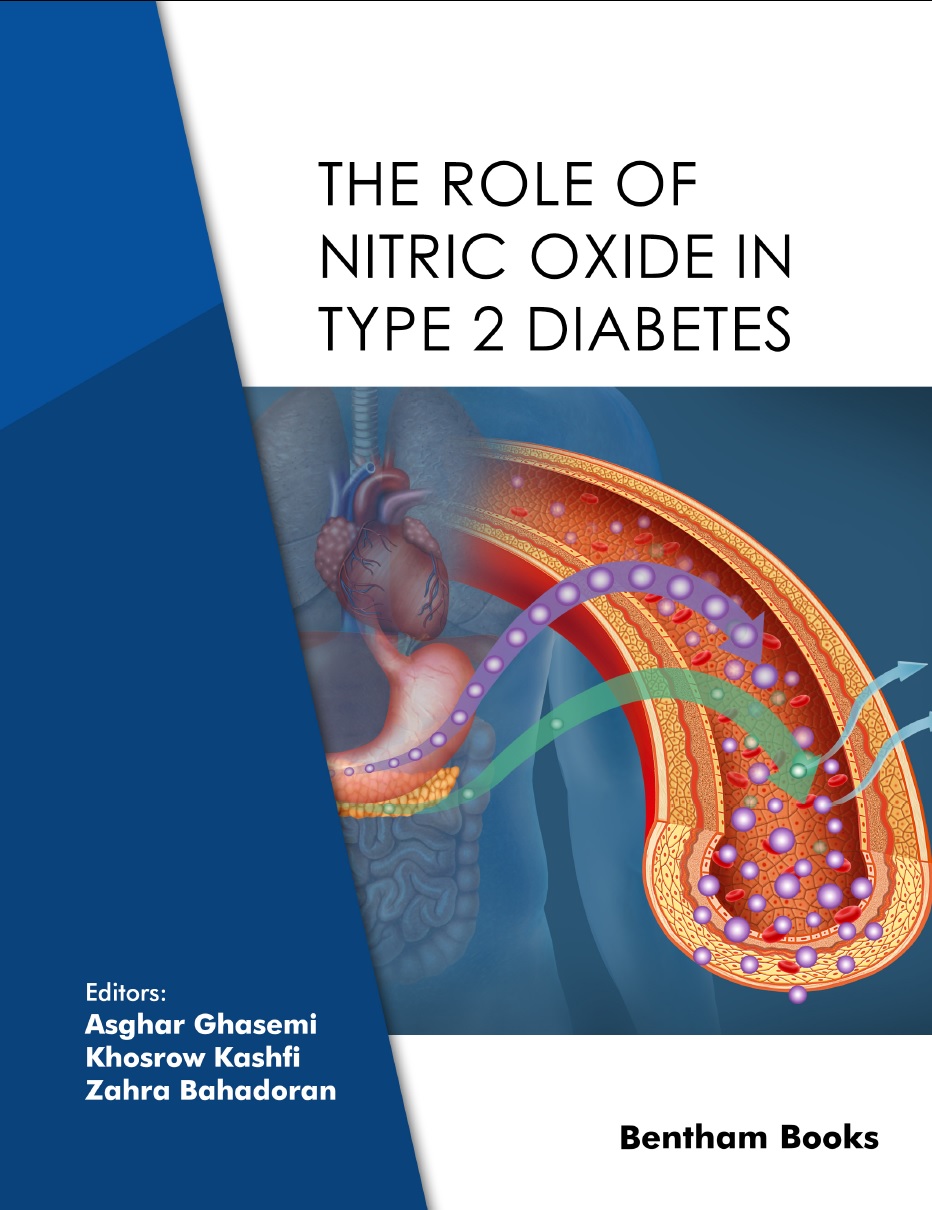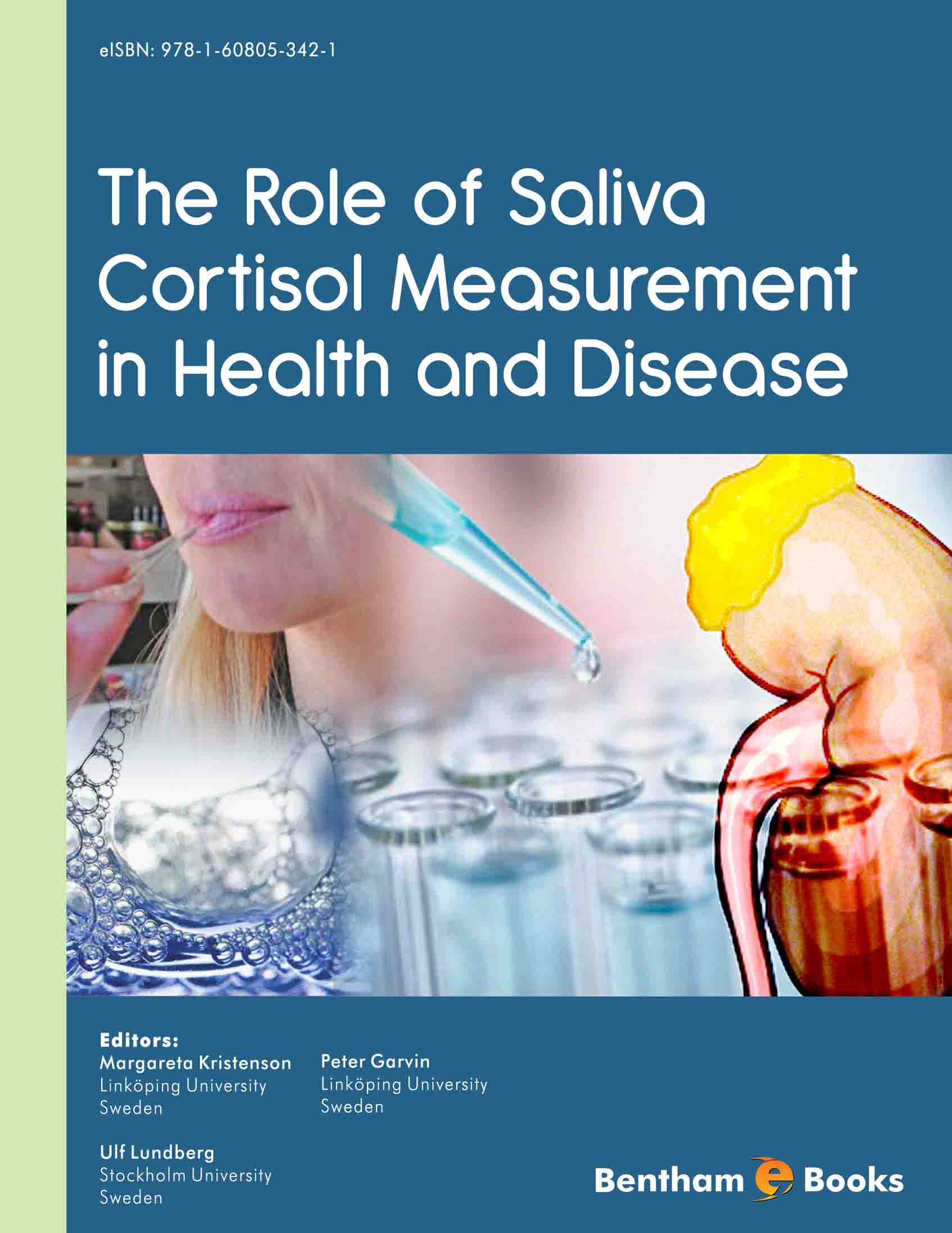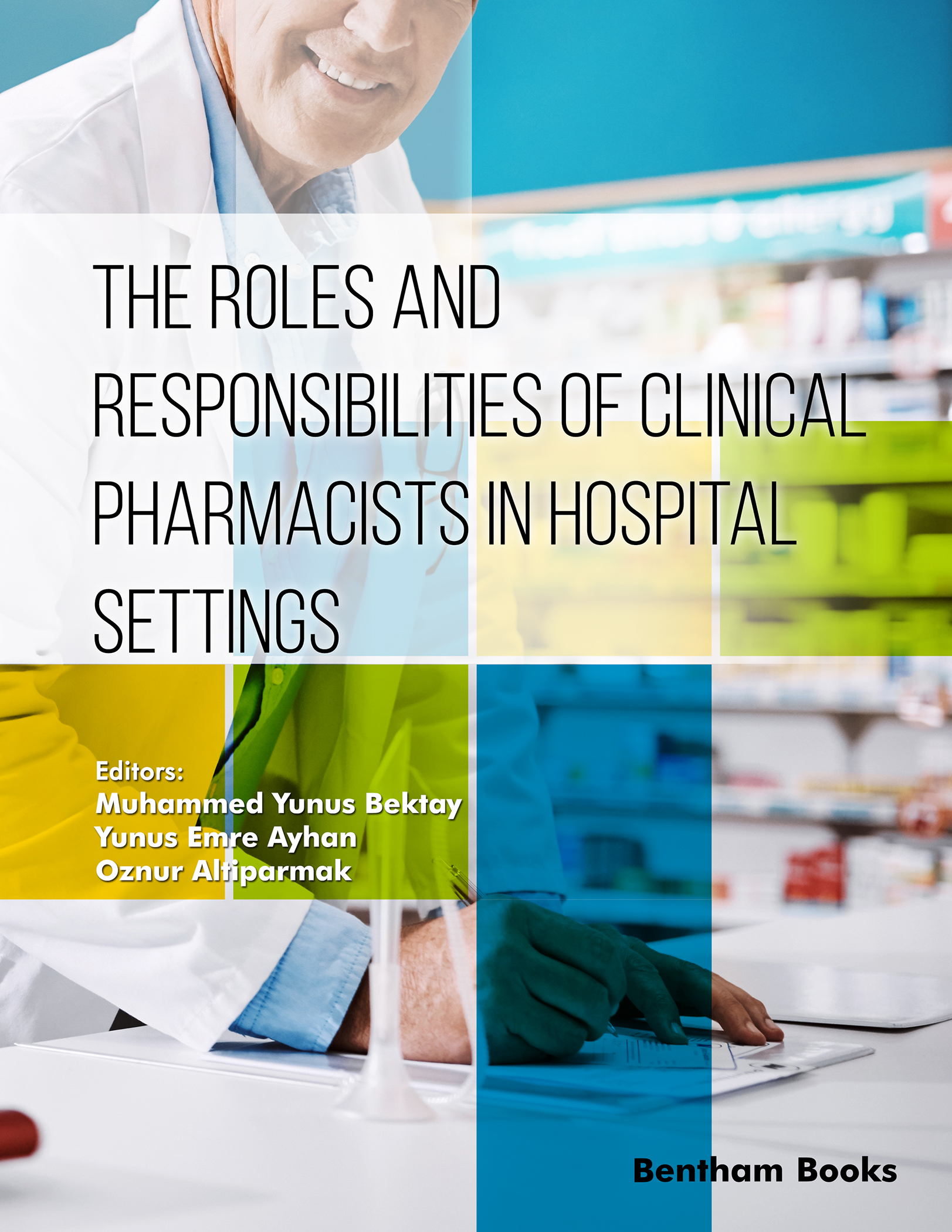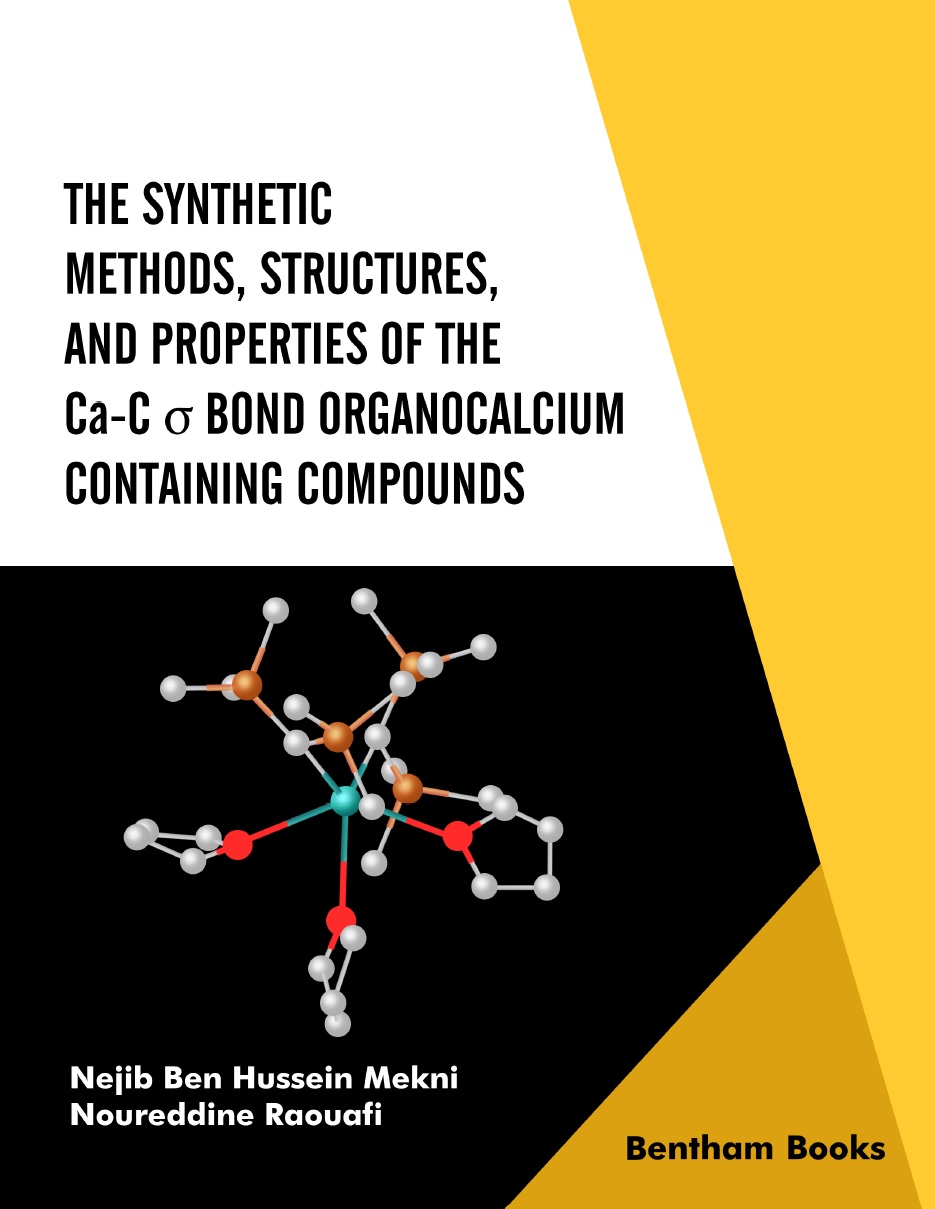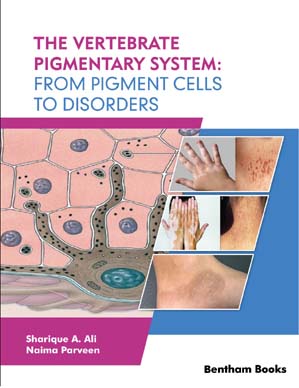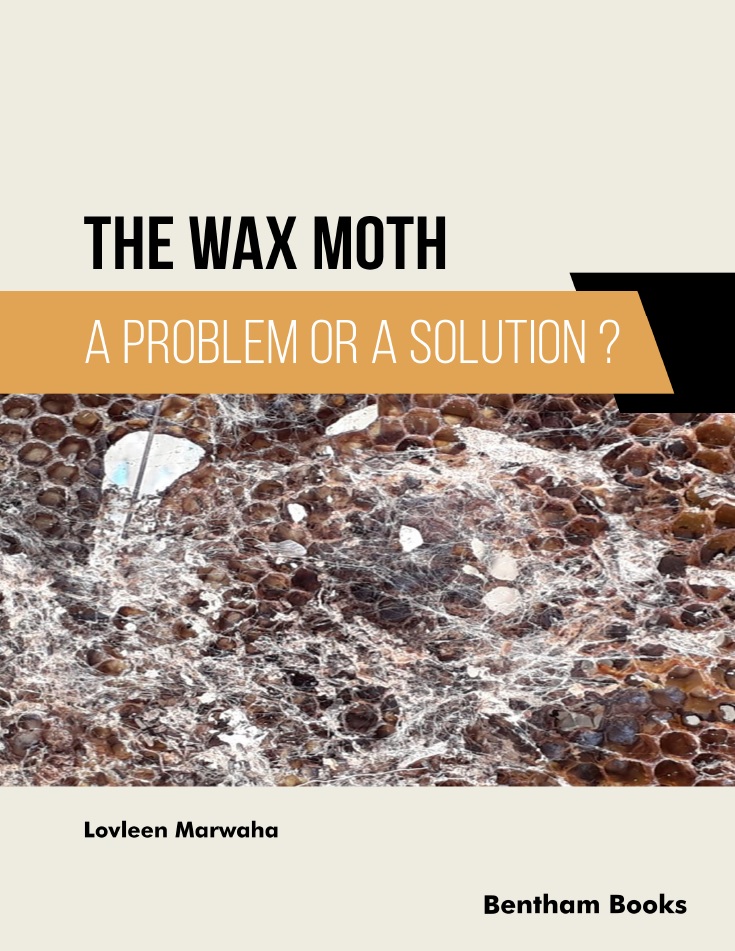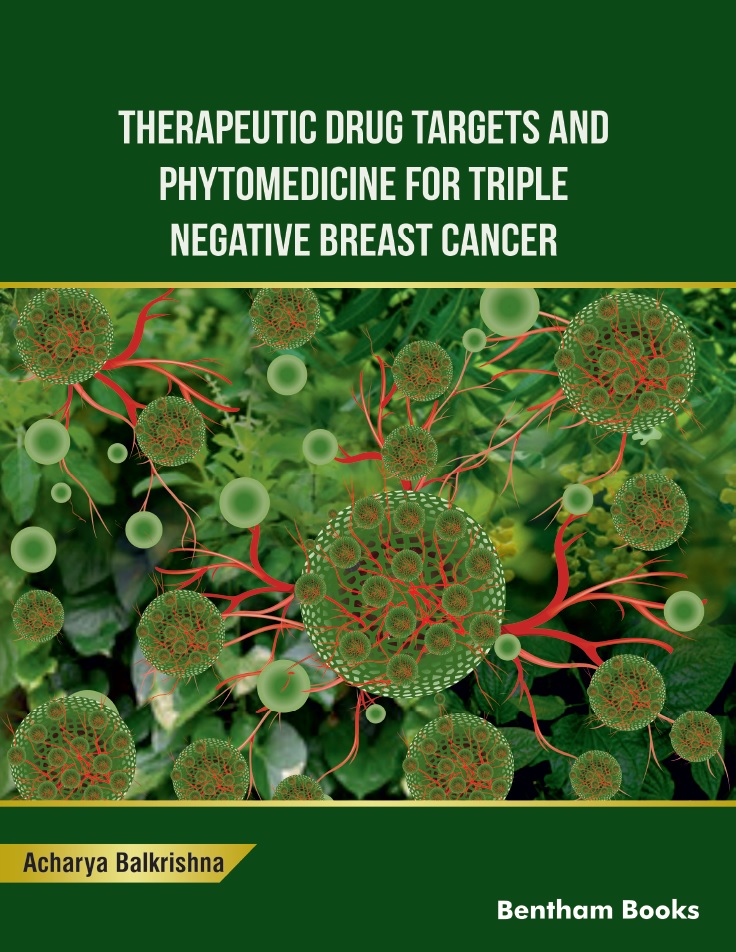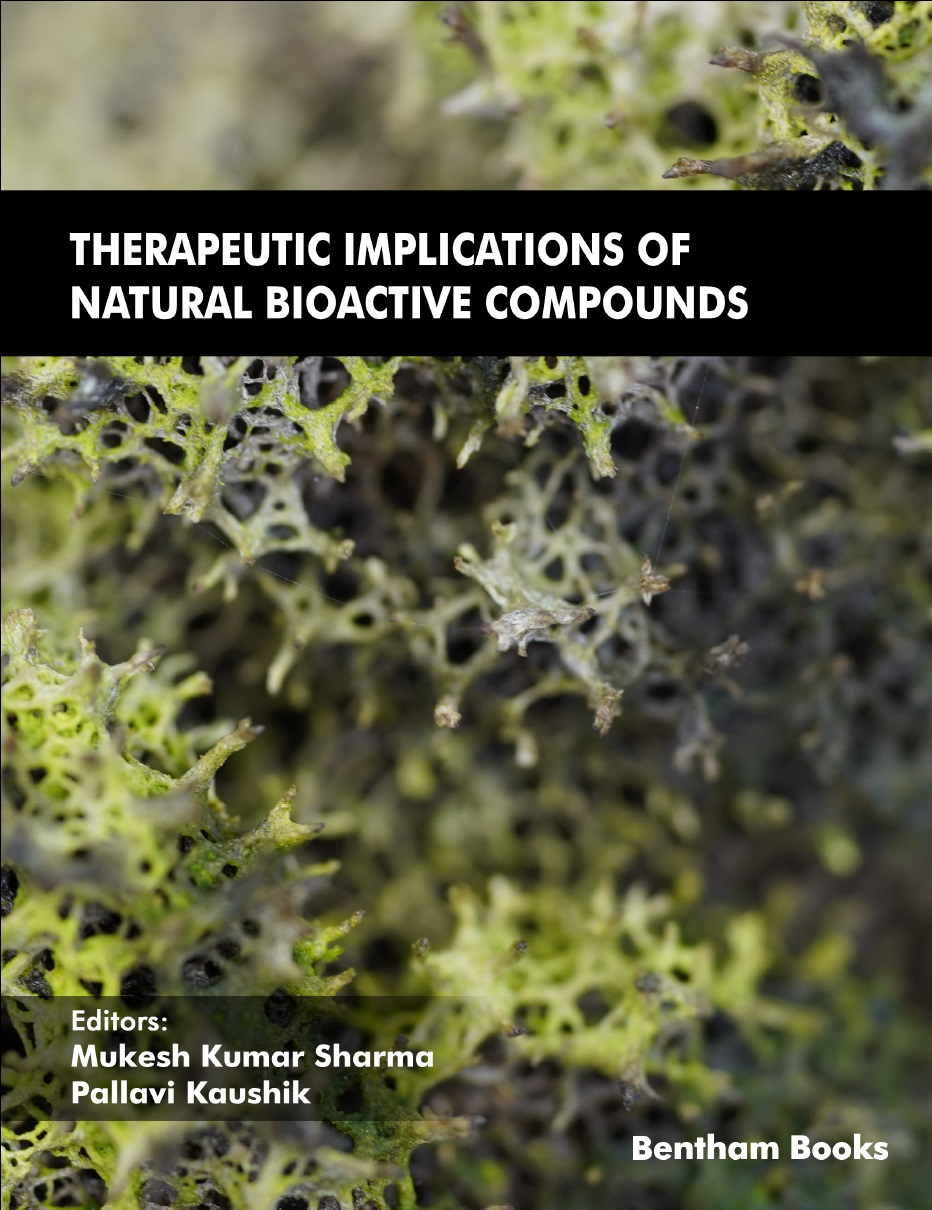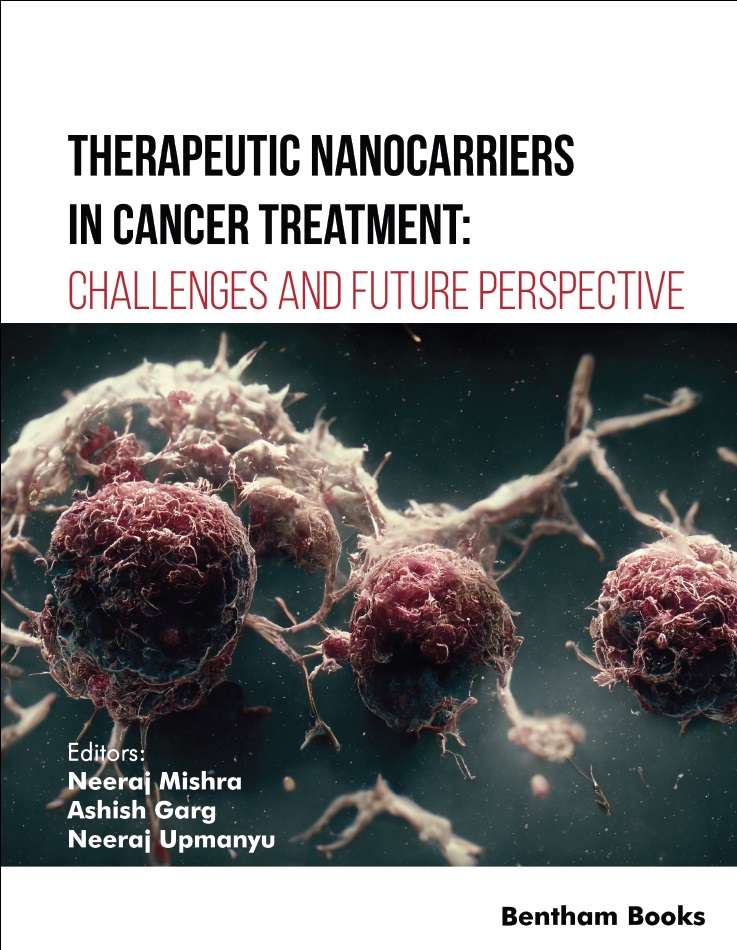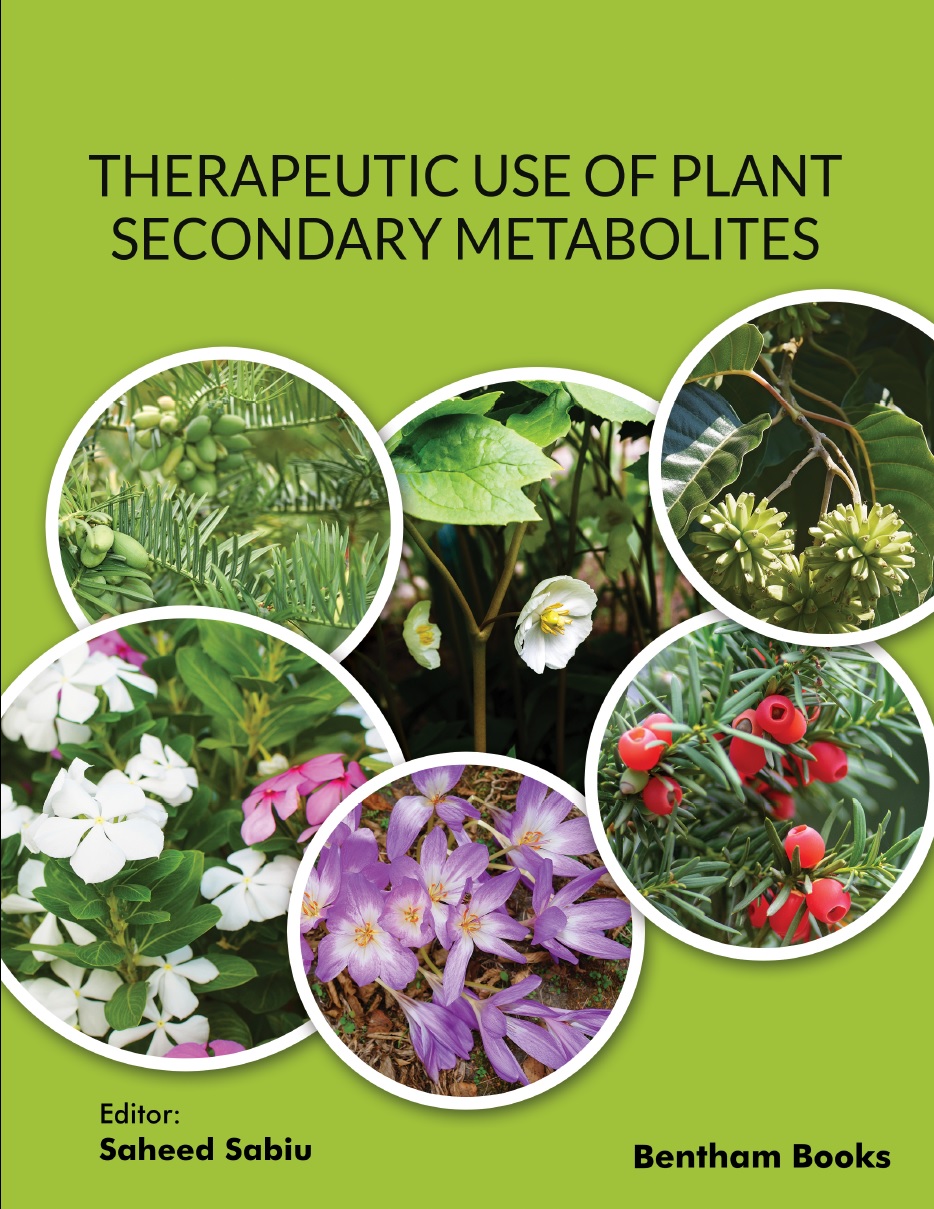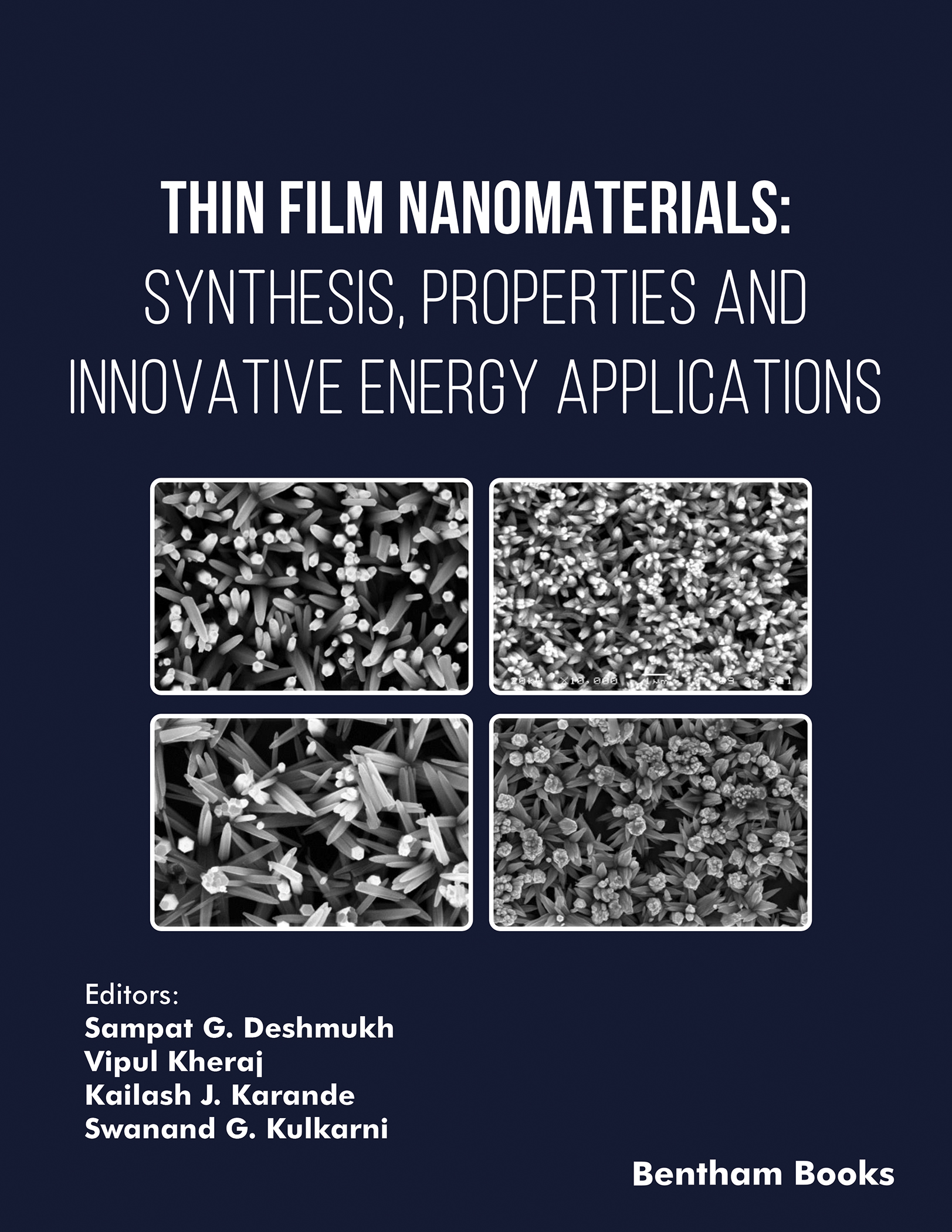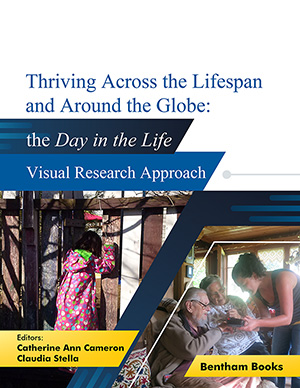- Home
- Publishers
- Bentham Science Publishers
Bentham Science Publishers
Bentham Science Publishers is a major publisher of more than 100 peer-reviewed science, technology and medical (STM) journals, along with a rapidly growing collection of eBooks. Since 1993, Bentham Science Publishers has been catering to the information needs of the pharmaceutical, engineering, biomedical and medical research community.761 - 780 of 812 results
-
-
The Polyandrous Queen Honey Bee: Biology and Apiculture
More LessThe queen honey bee is known to mate with multiple drones, and can produce over a million offspring in its lifetime. Its presence is vital to the growth and survival of a beehive. This reference book is a detailed guide to queen honey bees. The book starts by providing deep insights into the fascinating biology of the queen honey bees, their morphometric features, developmental synchronicity, genetics, hormones, pheromones, colonial organization and swarming. Further, the book describes artificial queen rearing techniques that facilitate healthy bee colony growth and increase apiculture productivity. The book equips readers with all the knowledge they need to know about queen bee development, their role in the colony and improving the health of their colony. Key Features - 14 reader-friendly chapters that comprehensively present information about queen honey bees - Comprehensive coverage about queen bee biology, including their physical morphology, genetics, proteomics, development and behavior (including worker and drone interactions) - Information about the role of queen bees in colonial organization and life-cycle events - Practical information that helps to improve bee colony health for research and apiculture (disease mechanisms and control, artificial breeding) The book is an essential primary reference on queen honey bees for biology and entomology students, academicians and researchers at all educational levels. Apiculturists, bee keeping enthusiasts, and general readers interested in honey bees can also benefit from the breadth of information presented.
-
-
-
The Practice of Sleep Medicine Around The World: Challenges, Knowledge Gaps and Unique Needs
More LessThis book explores the different ways sleep medicine is practiced in the world by presenting information from multiple countries from all continents. The editors, all sleep medicine experts, dive into both clinical practice, and research keeping an eye on healthcare needs and disparities, before proposing solutions. The contributions also take into account the social, geographical and political situation of each country, along with demographic considerations such as income levels, adding a dimension of context to the contents. The book is meant to be a reference for sleep medicine practitioners who encounter diverse patients in their daily practice. It also serves as a good resource for anyone interested in the state of global health studies.
-
-
-
The Production of Biodiesel and Related Fuel Additives
Recent Advances in Renewable Energy: Volume 6
More LessThis volume is a review of recent developments, opportunities, and challenges in the conversion of biomass from different sources to biodiesel or related fuel additives. Key features of the book include fully referenced chapters edited by experts, a blend of basic and current information on biodiesel and a summary of sustainable use of biodiesel byproducts like glycerol.
The volume presents a comprehensive range of 13 topics related to biodiesel production and fuel additives. It begins with a historical overview of biodiesel and related additives, followed by detailed chapters on biodiesel production from various sources such as soybean oil, palm oil, and Jatropha curcas oil. Recent advancements in catalytic thermochemical conversions of biomass into biofuels are explored, alongside discussions on algal biocrude as a feedstock. The role of homogeneous and heterogeneous catalysis in biodiesel production is examined, along with innovative techniques such as microwave and ultrasound-assisted synthesis. The book also presents information about the utilization of waste cooking oil and waste-derived catalysts, concluding with insights into solketal synthesis and catalytic biodiesel production via simultaneous esterification and transesterification.
The book imparts the technical know-how on biodiesel and relevant fuel additives for engineering and sustainability students, professionals and apprentices. It also informs policymakers in the energy sector on the benefits of biodiesel as a renewable energy resource.
-
-
-
The Role of AI, IoT, and Blockchain in Mitigating the Impact of COVID-19
More LessIn the wake of the global COVID-19 pandemic, humanity faced unprecedented challenges that necessitated innovative technological solutions. The Role of AI, IoT, and Blockchain in Mitigating the Impact of COVID-19 explores the transformative influence of Artificial Intelligence (AI), Internet of Things (IoT), and Blockchain technologies in combating the pandemic's effects.
Key themes:
Technological Pandemic Response: This book delves into how technology played a pivotal role in enabling social distancing, remote monitoring, contact minimization, telecommuting, online education, virus analysis, and predictive modeling, effectively aiding the fight against the coronavirus.
Data Precision: Accurate and reliable data are essential for tracking virus spread. The book demonstrates how AI, IoT, and Blockchain can establish digital databases that ensure data accuracy, accessibility, and real-time monitoring, addressing the challenges faced by public healthcare systems.
Innovative Applications: Chapters in this book cover a wide array of applications, from AI-driven models for COVID-19 analysis and prediction to the use of 3D printing technologies, IoT tools for virus control, and the impact of AI and IoT in healthcare. It also explores the role of social media in promoting social distancing.
Advanced AI Techniques: Readers gain insights into cutting-edge AI techniques applied to COVID-19 in areas such as treatment, diagnosis, prognosis, chest X-ray and CT analysis, pandemic prediction, and pharmaceutical research.
Industry 4.0: The book discusses Industry 4.0 technologies and their contribution to sustainable manufacturing, efficient management strategies, and their response to the challenges posed by the pandemic.
Contributed by a distinguished panel of national and international researchers, with multidisciplinary backgrounds specializing in Artificial Intelligence, biomedical engineering, machine learning, and healthcare technology, public health and industrial automation. Each contribution includes derailed references to encourage scholarly research.
This book serves as a valuable resource for academic and professional readers seeking to understand how modern computing technology has been harnessed to address the unique challenges posed by the COVID-19 pandemic. It offers insights into technological innovations and their potential for the betterment of society, especially in times of crisis. Readers will be introduced to computing techniques and methods to measure and monitor the impacts of medical emergencies similar to viral outbreaks and implement the necessary infection control protocols.
-
-
-
The Role of Chromenes in Drug Discovery and Development
More LessChromene is a naturally abundant heterocyclic compound found in alkaloids, tocopherols, terpenes and other compounds. Its derivatives can be used as a scaffold that exhibits pharmacological activity in the human body.
Chromene drugs and related bioactive molecules are the prime focus of this reference. It presents 13 thoroughly researched chapters that comprehensively cover all aspects about the molecule. Starting with a detailed introduction to its role and importance in drug discovery, the book goes into the details of chromene structure, synthesis and pharmacology. Readers can gain knowledge of different commercial medicines based on chromene and its pharmacological activity against different diseases. The elaborate topics in the book will help researchers working on chromene based drugs.
Key highlights of the book include:
- Complete coverage of chromene's role in nature and drug development with references to historical background and current developments
- References to commercial and preclinical drugs and patents of interest
- Explanation of chromene bioacivity in different diseases (antioxidant, antidiabetic, antinflammatory, antibacterial and antifungal activities, antitumour, immunomodulatory activity)
- Explanation of chromene activity against SARS-Cov2
-
-
-
The Role of Nitric Oxide in Type 2 Diabetes
More LessType 2 diabetes (T2D) is a complex metabolic disorder characterized by impaired glucose metabolism and pancreatic β-cell dysfunction. No effective treatments are available for T2D, although there have been many developments in the therapeutic arena. Nitric oxide (NO) is an endocrine agent with multiple and important biological roles in most mammalian tissues. NO has emerged as a central regulator of energy metabolism and body composition. NO bioavailability is decreased in T2D. Several of the pharmaceuticals used in T2D affect the NO system and perhaps even more so by the drugs we use to treat diabetic cardiovascular complications. Experimental works in animal models of T2D show promising results with interventions aimed to increase NO signaling. However, translation into human studies has so far been less successful, but more large-scale prolonged studies are clearly needed to understand its role.
This book is a collection of reviews that deal with the role of nitric oxide in type 2 diabetes, providing a unique overview of NO signaling, and pointing out key areas for more detailed research. The book includes contributions about the pathophysiology of T2D, a brief history of discovery and timeline of NO research, a comprehensive overview of impaired NO metabolism in T2D, precursors of NO (i.e., L-arginine, L-citrulline, nitrate, nitrites, and NO donors), NO and T2D from genetic points of view, NO and diabetic wound healing, NO and osteoporosis, NO and hyperuricemia, NO and Alzheimer's Disease, therapeutic applications of NO and NO donors in T2D. The compilation is of great value to anyone interested in the biochemistry of NO and its relationship to diabetes.
-
-
-
The Role of Saliva Cortisol Measurement in Health and Disease
More LessThis e-book is based on a critical evaluation of existing literature on salivary cortisol, aiming to evaluate the utility of salivary cortisol as a biomarker in various settings. It focuses on how different ways of evaluating levels of salivary cortisol may have an impact on the interpretation of cortisol measurements in various contexts.
This e-book focuses on salivary cortisol in relation to the following topics: psychosocial work environment (effort reward imbalance and job demand vs control model), psychosocial resources (mastery, perceived control, sense of coherence), psychosocial risk factors (perceived stress, depression, vital exhaustion, burn-out), sleep quality, biological markers (bodily factors, cardiovascular risk factors, inflammation and metabolism) and somatic outcome.
This ebook should serve as a reference for studies planned to adopt cortisol as an assessment tool.
-
-
-
The Role of Seaweeds in Blue Bioeconomy
More LessThis comprehensive volume is a review on the pivotal role of seaweeds in the blue bioeconomy. It begins by introducing the blue bioeconomy concept which encompasses the use of renewable biological marine resources to produce food, materials and energy. The book then continues to explore the applications of seaweeds. Chapters cover the biomedical applications (nutraceuticals), functional applications (functional ingredients, biofertilizers), and commercial applications (cosmeceuticals, animal feeds) of seaweeds. Each chapter is structured into sections to provide an easy to understand summary of respective topics, with detailed discussions that reveal the intricate nature of seaweeds. The book shares perspectives from experts in environmental science and biology, with references for advanced readers. The book is for anyone who wants to understand the role of seaweeds in the bioeconomy and for sustainable development.
-
-
-
The Roles and Responsibilities of Clinical Pharmacists in Hospital Settings
More LessThe Roles and Responsibilities of Clinical Pharmacists in Hospital Settings is a comprehensive textbook designed to equip graduate pharmacy students and residents with the essential skills and knowledge needed for effective clinical pharmacy practice in hospitals. This book emphasizes the multidisciplinary nature of clinical pharmacy and the importance of adhering to international guidelines and standards.
The book provides an overview of hospital pharmacy practice with an introduction to the essential requirements of a hospital environment, followed by a detailed exploration of clinical pharmacist roles across major medical subspecialties, including internal medicine, infectious diseases, intensive care, pediatrics, cardiology, and oncology.
Key Features
General and specialized Roles: Comprehensively covers different aspects of clinical pharmacology from basics to medical subspecialties
Practical Insights: Offers practical tools, reference resources, and strategies for clinical pharmacy practice across different hospital departments.
Advanced Practice: Guides readers from foundational knowledge to advanced clinical pharmacy practices, preparing them for specialized roles within hospital settings.
Global Standards: Highlights the importance of multidisciplinary education and adherence to global clinical pharmacy standards.
This textbook is an essential resource for pharmacy students, specialist assistants, and anyone pursuing a career in clinical pharmacy.
-
-
-
The Synthetic Methods, Structures, and Properties of the Ca-C σ Bond Organocalcium Containing Compounds
More LessThis reference describes the chemistry of organocalcium compounds that contain a Ca-C σ-bond. It collects the information about this niche group of organometallic compounds into 4 easy-to-read chapters. It is intended for scholars in the field of organic chemistry, and researchers in industrial chemistry and chemical engineering departments.
Key features:
- Presents a comparison to homologous compounds of other alkaline earth metals
- Explains the main problems encountered in the synthesis of organocalcium compounds with reference to the reactivity of calcium, the low solubility in common solvents and the high reactivity of the formed intermediates and products
- Highlights many concepts about the Ca-C bond such as the steric hindrance, degrading agent properties, organocalcium spectroscopy, and more
-
-
-
The Vertebrate Pigmentary System: From Pigment Cells to Disorders
More LessThe Vertebrate Pigmentary System: From pigment cells to Disorders provides readers with fundamental knowledge of the structural and functional aspects of vertebrate pigment cells - melanophores and melanocytes - from their origin to different stages of development to related diseases. Chapters of the book explain the specific regulatory receptors and markers, signaling pathways of skin melanocytes along with the diseases (hypopigmentation and hyperpigmentation) in humans associated with their disruption. Concurrently, the etiologies of pigmentary disorders and the various therapeutic approaches for their treatment are presented in focused chapters of the book with updated information from recent publications. A summary of natural product based treatment for hypopigmentation and hyperpigmentation rounds up the contents.
This reference is a basic guide for medical students and dermatology residents, and a handy source of information for students, researchers, academicians in the field of pigment cell biology, pharmacology and cosmetology.
-
-
-
The Wax Moth: A Problem or a Solution?
More LessThe Wax Moth: A Problem or a Solution? Covers the biology, development, morphometric characters, pheromones, mating, reproduction of the greater wax moth, which is a major pest in bee colonies. It also gives tips to beekeeping enthusiasts and professionals on how to manage wax moth infestations. Finally, it elucidates the involvement of wax moths in plastic degradation.
Key Features
- A complete overview of the basic biology of the greater wax moth
- A quick guide on wax moth pest control
- Tips for beekeepers to enhance colony growth for sustainable apiculture
- Information for researchers on the wax moth's involvement in plastic degradation
- Simple text for readers of all levels
- References for additional reading
The Wax Moth: A Problem or a Solution? Is a comprehensive yet quick reference that is ideal for entomology and agriculture students, researchers, academicians and beekeepers (both professional and hobbyist).
-
-
-
Therapeutic Drug Targets and Phytomedicine For Triple Negative Breast Cancer
More LessTriple negative breast cancers (TNBC) are a biologically aggressive form of breast cancer and constitute approximately 10-15% of all breast cancer patients. Distant metastasis, lack of clinically targeted therapies and prognostic markers, makes the disease difficult to treat. Till now not much work has been carried out on this deadly disease. This book provides an overview of TNBC etiology, its treatment strategies and prognostic markers to identify the outcome of standard therapies. Signalling pathways namely cell proliferation, angiogenesis, invasion and metastasis, apoptosis, autophagy and others involved in complicating the disease have been described in the chapters to convey an understanding about the disease mechanisms. All the possible drugs either in pre-clinical or clinical stages have also been mentioned with data that depicts their efficiency in targeting altered genes. The book also introduces the reader to herbal medicine exhibiting high potency to target TNBC, their synthetic analogs used during chemotherapy and their ability to fight against chemoresistance. The concept of phytonanotechnology has also been discussed. The book helps create awareness among a broad range of readers about TNBC. It points to prioritizing the upgradation of health care facilities and re-designing future treatment strategies to provide maximum benefit to breast cancer patients.
-
-
-
Therapeutic Implications of Natural Bioactive Compounds
Frontiers in Bioactive Compounds: Volume 3
More LessThis volume is a comprehensive compilation of contributions on the state of art knowledge about bioactive compounds including their sources, isolation methods, biological effects, health benefits and potential applications. These bioactive compounds could serve as alternatives in the prevention or treatment of multifactorial diseases for vulnerable population groups.
Chapters in the book incorporate the knowledge based on traditional medicine with recent findings on bioactive molecules and their pharmaceutical implications in neurodegenerative diseases, cancer, COVID 19, diabetes, immunomodulation and farm animal diseases.
The book also highlights the latest breakthroughs in the field of screening, characterization, and novel applications of natural bioactive compounds from diverse group of organisms ranging from bacteria, algae, fungi, higher plants, and marine sources.
Authors from renowned institutions of India, Japan and China have shared their e
It is an informative reference for researchers, professors, graduate students, science enthusiasts, and all those who wish to gain insights into various aspects of bioactive compounds and development of new pharmacological active constituents and nutritional science.
-
-
-
Therapeutic Nanocarriers in Cancer Treatment: Challenges and Future Perspective
More LessNanotechnology has revolutionized cancer diagnosis and therapy through targeted drug delivery. Advances in protein engineering and materials science have led to the development of nanocarriers (NCs), which have helped overcome the challenges faced during conventional cancer treatment. These nanocarriers serve as an efficient transport module for drugs. Nano-drug delivery has emerged as a promising technology that results in early detection and better treatment of various cancers. The approved nanoparticles currently used in cancer treatment strategies include liposomes, dendrimers, polyplexes, solid lipid nano-carriers, etc. These nanocarriers shall provide a quick, safe, and cost-effective method in cancer therapy and management. This book contains thirteen chapters focusing on the treatment of various cancers, i.e., lung, breast, cervical, ovarian, colon, prostate, head and neck, etc., through nanocarrier drugs. The chapters include reviews on a wide variety of advanced data from existing and ongoing clinical research and major regulatory considerations.
-
-
-
Therapeutic Use of Plant Secondary Metabolites
More LessThe book is an evidence-based reference about biochemical mechanisms of action of plant secondary metabolites. It conveys an understanding about how plant-based therapies work, and explains their role in the treatment of complementary and alternative medicine for in the treatment of diabetes, cancer, neurodegenerative disorders, microbial infections, etc., The 15 chapters are written by eminent scholars, lecturers, and experts in indigenous knowledge systems (IKS), industrial and medicinal plants, phytotherapeutics, and phytoinformatics. Reports on health benefits of specific phytochemicals are also highlighted. In addition to basic concepts in medicinal chemistry and ethnopharmacology, the book covers the role of modern computer techniques in developing new pharmaceuticals from plat sources.
Therapeutic Uses of Plant Secondary Metabolites is timely and valuable reference for both undergraduate and postgraduate students in medicinal chemistry, as well as researchers and professionals in IKS, phytomedicine, ethnopharmacology, phytopharmacology, plant biotechnology, drug discovery and development, and phytotherapeutics.
-
-
-
Thermal Cycles of Heat Recovery Power Plants
More LessThermal Cycles of Heat Recovery Power Plants presents information about thermal power plant cycles suitable for waste heat recovery (WHR) in modern power plants. The author covers five thermal power cycles: organic Rankine cycle (ORC), organic flash cycle (OFC), Kalina cycle (KC), steam Rankine cycle (SRC) and steam flash cycle (SFC) with the working fluids of R123, R124, R134a, R245fa, R717 and R407C. The handbook helps the reader to understand the latest power plant technologies suitable for utilizing the waste heat generated by thermal industrial processes.
Key Features:
- Comprehensive modeling, simulation, analysis and optimization of 5 power cycle types with different working fluids
- Clear information about the processes and solutions of thermal power cycles to augment the power generation with improved energy conversion.
- Simple, reader friendly presentation
- bibliographic references after each chapter for further reading
This handbook is suitable for engineering students in degree courses and professionals in training programs who require resources on advanced thermal power plant operation and optimal waste heat recovery processes, respectively. It is also a handy reference for energy conversion efficiency in heat recovery power plants. The book is also of interest to any researchers interested in industrial applications of thermodynamic processes.
-
-
-
Thermal Spray Coatings: Materials, Techniques & Applications
More LessThis comprehensive book explores the techniques, materials, and real-world applications of thermal spray coatings across various industries, including power generation, aerospace, medical, and automotive sectors.
Readers will learn about the basic science and engineering aspects of thermal spray technology, its historical developments, and the diverse range of materials used, from metallic to ceramic materials, and nano-crystallization materials. Distinct thermal spray techniques are explained (flame spray, detonation-gun spray, high-velocity oxy-fuel spray, electric arc spray, plasma spray and cold spray). Chapters on advanced topics also give an understanding of crucial material properties such as high temperature corrosion, oxidation, erosion or wear resistance, and biocompatibility.
Key features
- Contributions from materials science experts with references for each topic
- Gives a comprehensive overview of materials and distinct spray techniques used in thermal coatings
- Dedicated chapters for applications of thermal coatings in different industries
- Covers recent trends and new advances such as surface modification techniques to improve functionality and performance
This book is intended as a resource for an in-depth understanding of the fundamentals and applications of thermal spray coatings for students, professionals and researchers in materials science and chemical engineering disciplines.
-
-
-
Thin Film Nanomaterials: Synthesis, Properties and Innovative Energy Applications
More LessThin Film Nanomaterials: Synthesis, Properties and Innovative Energy Applications provides a comprehensive overview of the synthesis, properties, and cutting-edge applications of thin film nanomaterials. Each chapter explores different aspects of thin film synthesis and its application in energy devices, showcasing different metal-based and carbon nanomaterials .
The book begins with a discussion on the synthesis and characterization of cadmium and zinc sulphide thin films for opto-electronics energy devices. Subsequent chapters delve into critical reviews of CIGS thin film nanomaterials, deposition techniques for metal oxide nanocomposite films, and nanostructured TiO2@carbon films for photocatalytic applications.
Bandgap engineering, optical properties of composite films, and recent advancements in metal oxide thin films are also covered. Additionally, the synthesis and characteristics of iron oxide films for solar cell and green energy storage applications are discussed.
Chapters on challenges and future prospects of CNT-based cathode emitters and advanced characterizations of nanocrystalline ferrimagnetic thin films provide valuable insights into emerging technologies.
This book is an essential resource for professors, scientists, engineers, research scholars, postdocs, and undergraduate/graduate students seeking to explore the forefront of nanomaterials and their applications in energy systems.
-
-
-
Thriving Across the Lifespan and Around the Globe: Day in the Life Visual Research Approach
More LessThriving Across the Lifespan and Around the Globe: Day in the Life Visual Research Approach is the result of several decades of international, pan-disciplinary research-team collaborations using quasi-ecological visual methodologies to investigate the psychosocial development of children in diverse communities. The initial studies highlighted in this work involved filming a Day in the Life of toddlers and primary school children, their families, and schools in diverse communities in Asia, South and North America, and Europe. Filmed in their homes and communities for an entire day, the youngest participants were commonly seen to be thriving in diverse psychosocial domains, such as in their security strivings, emergent literacy and graphic representations, and musicality. Research shows that the nature of a child's development can vary in as many ways as there are diverse contexts. Thriving in the transition from home to primary school is a second developmental milestone investigated in the research.
The book serves as an account of the lived experiences of thriving children,among their families, their schools and their communities. The contents give an invaluable insight into the psychology of early childhood while giving the reader an opportunity to understand the resilience of mobile early teenagers as well as independent older adults. The contributions in the book also provide an additional layer to our understanding of visual ethnography by covering such phenomena as agency and communitarianism, spirituality, and the place of humour in the context of challenges encountered across the lifespan. Through presenting quasi-ecological experimental approaches, this reference enhances the readers insight into the texture and nature of thriving in situ, in natural contexts.
-

